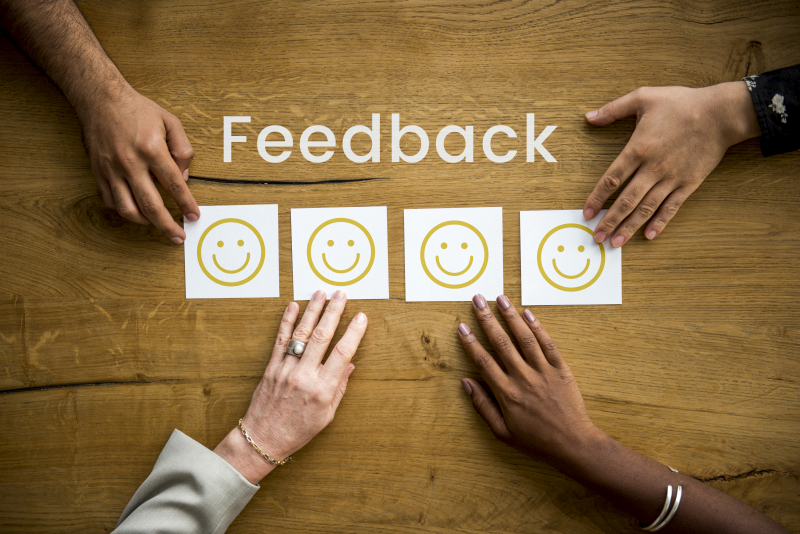Getting new customers feels great—but turning them into loyal fans is where the real magic happens. Smart customer retention isn’t just a buzzword; it’s your secret weapon for lasting growth. In this article, we’ll show you simple, effective strategies that keep your customers engaged, coming back, and spreading the word. Whether you're just starting out or scaling an established business, these insights will help you build deeper relationships—and a brand that truly sticks.
Customer Retention: What does it mean?
At its core, customer retention is your business’s ability to keep customers coming back for more. It’s not just about making a sale—it’s about building a relationship that lasts long after the first purchase.
Great customer retention means you're doing something right—your product delivers, your service stands out, and customers choose you over the competition.
Put simply, it’s how you turn casual buyers into loyal regulars. It’s one of the clearest signs that your customers are happy, your brand is trusted, and your business is built to grow. Nail this, and you’re not just making sales—you’re building a fanbase.
Customer Retention and E-commerce
Customer retention is even more important in e-commerce. Why? Because getting new customers is becoming harder and more expensive.
Ads aren’t as targeted as they used to be, and privacy rules make it tricky to track online behavior. So instead of chasing new buyers all the time, smart e-commerce brands are now focusing on building stronger relationships with the ones they already have.
When customers return, they’re not just more likely to buy again—they’re also more likely to spread the word, post reviews, and bring in others. This creates a powerful cycle: happy customers lead to more sales, more trust, and more loyalty.
That’s what experts call the “loyalty momentum effect.” It’s not just about discounts anymore. Today, retention is about creating personal experiences—rewards that feel special, messages that match what people want, and even involving loyal shoppers in product feedback. For e-commerce brands, that kind of connection can make all the difference between steady growth and falling behind.
Measuring of Customer Retention: How to Do It Right?
Customer Retention Rate (CRR) tells you how good your business is at keeping customers around. In other words, it shows what percentage of people come back after their first purchase.
Think of it as your answer to, “Are my customers sticking with me?” A high CRR means they are—and that’s a great sign of loyalty and satisfaction. On the flip side, a low rate could mean folks are leaving after a purchase or two, which makes it harder to grow. Focusing on a customer retention increase can turn those one-time buyers into loyal fans.
To calculate CRR, use this formula:
CRR = ((E – N) / S) × 100
- E = Number of customers at the end of the period
- N = New customers added during the period
- S = Customers at the start of the period
This gives you a percentage that shows how many existing customers you’ve kept. It’s a simple but powerful way to measure loyalty and the overall health of your customer relationships.

Quick-Hit Stats That Make the Case for Customer Retention
Customer acquisition is getting pricey. E-commerce brands are now losing $29 per new customer, up from $9 in 2013. That’s a 222% increase—a costly trend that can’t be ignored.
- The digital world is louder than ever. With influencers, big brands, and endless ads, cutting through the noise is tough—and expensive.
- Privacy changes = fewer data points. GDPR, CCPA, and Apple’s iOS updates have made personalized targeting harder and costlier.
- Less precise ads = more ad spend. Without reliable third-party data, brands need to spend more to find the right audience.
- Retention boosts ROI. McKinsey says shoppers are 64% more likely to buy again from a brand they’ve purchased from before.
- Loyal customers are powerful. They’re 35% more likely to buy from you than a competitor—and they often bring their friends.
- Personalization drives retention. Brands using customer data to personalize every interaction see deeper loyalty and faster growth.
- Loyalty pays off. Engaged customers don’t just buy more—they spread the word, boosting organic growth without extra ad spend.
- Brand advocates cut CAC. Happy, loyal customers turn into mini-marketing machines, reducing your need for paid outreach.
Retention increases profitability. The more customers you keep, the less you spend to grow—making your business more sustainable.
How to Improve Customer Retention: Practical Strategies That Work
Want to improve customer retention? Start by focusing on what really matters—delivering consistent value and building genuine relationships. It’s about more than just selling. You need to understand your customers’ needs, reward their loyalty, and stay connected at every step of their journey. Keeping customers loyal isn’t just about having a great product—it’s about having the right strategy behind it.
Here are our TOP ideas to level up your customer retention strategy. These are real, practical customer retention techniques that help businesses boost repeat sales and create lasting connections.
1. Deliver Exceptional Customer Service
Quick, helpful, and friendly support builds trust and keeps customers happy. When people feel heard and valued, they’re far more likely to stay loyal.
But great service isn’t just reactive; it’s a key part of smart customer retention marketing. Every interaction is an opportunity to reinforce your brand’s values and show customers they matter. Whether it’s resolving an issue on the first try, offering proactive help, or simply responding with empathy, outstanding service turns average experiences into memorable ones.
2. Personalize the Customer Experience
Use customer data to tailor offers, product recommendations, and communication. Personalized experiences make customers feel understood—and that goes a long way toward boosting engagement and loyalty.
But don’t stop at names and product suggestions. Go deeper. Segment your audience based on behavior, purchase history, or even browsing patterns to send more relevant messages. A first-time buyer and a long-time loyalist shouldn’t get the same email.
You can also personalize timing. Use past activity to figure out when each customer is most likely to open emails, revisit your site, or complete a purchase. Tools with predictive analytics can help automate this and keep your messaging timely without feeling spammy.
Another great tactic? Celebrate milestones. Send birthday wishes, anniversary discounts, or a simple thank-you note after a customer's 10th purchase. These thoughtful touches feel genuine and strengthen the emotional connection with your brand.
Finally, consider offering personalized content—like how-to guides based on past purchases or product care tips relevant to their order. It’s a subtle but powerful way to show customers you’re paying attention and invested in their experience.

3. Implement a Loyalty Program
Rewarding repeat purchases is a proven way to keep customers coming back. Loyalty programs create a sense of progress and appreciation, turning one-time buyers into regulars. By offering rewards like points, discounts, or access to special perks, you build positive habits around your brand.
Here are a few common types of loyalty programs to consider:
- Points-Based Programs – Customers earn points for each purchase, which can be redeemed for rewards. Simple, flexible, and popular across industries.
- Tiered Programs – The more a customer spends, the higher their level—and the better their benefits.
- Cashback Programs – Give customers a percentage of their purchase back in the form of store credit or cash. It’s straightforward and especially appealing to value-focused shoppers.
- Referral Programs – Reward customers for bringing in new business. This boosts both loyalty and growth through word-of-mouth.
- Value-Based Programs – Instead of personal rewards, customers’ purchases support a cause. Great for mission-driven brands that want to build emotional loyalty.
- Visit-Based Rewards – Customers earn rewards simply by visiting or checking in, not just purchasing. Ideal for service-based businesses like cafés, salons, or fitness studios.
- Spend-Based Rewards – Incentivize higher spending by offering perks after reaching specific spending thresholds. Encourages larger or more frequent purchases.
- Fixed Discount Programs – Provide members with a consistent discount (e.g. 10% off) every time they shop. Easy to implement and attractive for frequent shoppers.
Choose the model that best fits your business and your audience’s preferences—then keep it easy to use and clearly communicate the benefits.
4. Stay in Touch with Email Marketing
Email isn’t dead—in fact, it’s one of the most effective tools in your client retention strategy. Sending regular, relevant emails keeps your brand front and center, even when customers aren’t actively shopping. Whether it's a quick product update, an exclusive offer, or just a friendly check-in, these messages show your clients that you care and haven’t forgotten about them.
When done right, email marketing feels less like a sales pitch and more like a conversation. It builds trust, reinforces your brand’s value, and encourages repeat purchases over time. Want to turn one-time buyers into loyal customers? Start with their inbox.
5. Ask for and Act on Feedback
Asking customers for their input is one of the simplest and most effective ways to improve retention. But it’s not just about collecting feedback—it’s about acting on it. When people see that their opinions lead to real changes, they feel valued and more connected to your brand.
Make it easy and enjoyable for customers to share their thoughts. You can use short, mobile-friendly surveys after a purchase, add a quick feedback button on your website, or even run fun polls on social media.
Consider offering a small reward—like a discount or entry into a giveaway—as a thank-you for their time. Most importantly, close the loop by communicating what you’ve changed based on their feedback. A simple message like “You asked, we listened!” can go a long way in building trust and loyalty.

6. Ensure Reliable, High-Quality Delivery
Fast, accurate, and smooth service isn’t just a nice touch—it builds trust. Whether it’s a meal served fresh in a restaurant or a seamless visit to your shop, the way you deliver your service tells the customer, “You’re in good hands.” That kind of consistency says a lot about your brand’s professionalism.
It’s also what keeps people coming back. Customers don’t just remember what they bought—they remember how they felt. And when their experience is stress-free, well-organized, and thoughtful, they’re much more likely to return. In a market full of choices, delivering your service with care can be the reason they choose you again.

7. Keep Communication Human and Helpful
Automation can be a lifesaver, but let’s be honest—sometimes you just want to talk to a real person. Many customers still crave that human touch, especially when they’re looking for help.
Offering easy access to live support—whether it’s a quick phone call, a chat with a real rep, or a friendly email reply—shows that your brand cares. It builds trust, strengthens relationships, and often turns a frustrating moment into a positive one.
8. Boost Organic Growth Through Word-of-Mouth
Fostering word-of-mouth support is one of the most powerful (and cost-effective) ways to increase customer retention. It happens when satisfied customers recommend your brand to others, often based on trust and personal experience.
Here’s how you can encourage it:
- Deliver consistently great service – People talk about positive (and negative) experiences. Make every interaction count.
- Surprise and delight – Unexpected perks, thank-you notes, or fast problem-solving can leave a lasting impression worth sharing.
- Create shareable moments – Encourage customers to post about their experience by offering social media-friendly packaging, contests, or referral codes.
- Launch a referral program – Give rewards to customers who bring in friends or family—it’s a direct way to turn loyalty into growth.
- Highlight user stories – Feature happy customers in your marketing or reviews section. This builds credibility and makes others want to join in.
Word-of-mouth can’t be forced, but it can absolutely be sparked—and when it’s genuine, it spreads fast.
Final Thoughts: Retention Is Where the Real Growth Happens
Acquiring new customers might grab the spotlight—but true growth happens when you retain them. Throughout this article, we’ve explored some of the most effective customer retention strategies, from personalized communication and loyalty programs to high-quality delivery and helpful human support.
The big takeaway? If you want to build a sustainable, profitable business, focus on the people who already believe in what you do. Your existing customers are your best asset. They’re more likely to buy again, spend more, and recommend you to others—if you give them a reason to stick around.
Because at the end of the day, customer retention isn’t just earned—it’s nurtured. And when you get it right, your business doesn’t just grow. It thrives.
